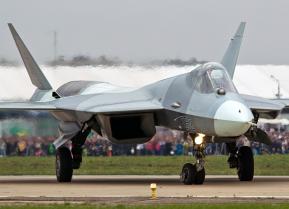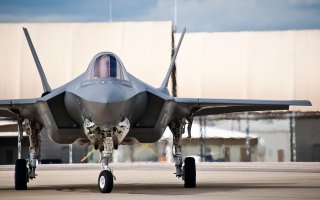Why Russia Really Hates the F-35 Stealth Fighter
Russian defense media routinely pits the F-35 against Russia’s Su-57, noting the superior aerodynamic performance of the latter.
From its humble origins under the Joint Strike Fighter (JSF) program to its current status as the global face of American airpower, Lockheed Martin’s state-of-the-art F-35 Lightning II fighter always seems to find its way into the headlines. And while U.S. defense experts and members of the press continue to debate on the F-35 and fifth-generation platforms in general, America’s flagship fighter has garnered no shortage of attention abroad. Here is what military observers in Russia--one of America’s top military competitors--think of the F-35.
Does Russia Fear the F-35?
Perhaps not unexpectedly, Russian commentators share a generally negative view of the F-35. Their criticisms run along several interrelated branches. First and most prominently, there is the generic constellation of popular F-35 critiques. This school of thought focuses on the F-35’s troubled development cycle, pointing to the vicious circle of cost overruns and chronic delays that made the F-35 what it is today. This view typically paints the F-35 as a high-end, niche product that boasts some advanced features, but utterly fails in its original purpose of being a mass-producible, cost-effective replacement for the F-16.
In a 2019 editorial, Russian outlet Tsargrad christened the F-35 the “most expensive and unfinished fighter in the world.” Tsargrad posited that “the plane, in theory, was supposed to embody the best of America’s aviation industry.” Instead, asserts the editorial, it became a sordid case study in lobbying, corporate kickbacks, and fighter design driven by profits over military usefulness.
Russian outlets routinely seize on the F-35’s technical problems-- the fighter’s 2017 oxygen deprivation scandal is a typical example of a popular story among defense commentators. Others have outright dismissed the F-35 as a deeply flawed product: “poor field of view from cockpit, impossibility of effective dogfighting for air superiority, awful weapons, system failure at temperatures below 15 degrees, catapult system malfunctions on first-generation systems… the list of the machine’s shortcomings takes up dozens of pages,” wrote prominent Russian defense outlet Voennoe Obozrenie.
Technical and cost-related criticisms are easily found on the pages of most Russian publications, but they were never exclusively Russian. On the contrary, they mirror the charges that have long been leveled against the F-35 by a growing chorus of American observers. Then there is the more characteristically Russian argument, one that has to do with comparisons. Russian defense media routinely pits the F-35 against Russia’s Su-57, noting the superior aerodynamic performance of the latter.
In a recent interview given to Russian state news, former Soviet test pilot Magomed Tolboyev said that the Su-57 can “easily defeat” the F-35 in a one-on-one dogfight, though he added that such a scenario is exceedingly unlikely in the context of modern aerial warfare: “Today, you no longer fight one on one. Everything depends on your support. There is electronic warfare today. This is no longer a sparring tatami, but a complex approach to tactical issues.” Russian commentators have applied a similar logic to Russia’s other superiority fighters, with Voennoe Obozrenie running the headline that the Su-35 vs F-35 matchup is akin to a “grown man battering a child with a truncheon.”
Still, others take a more measured view, acknowledging salient differences in battlefield use-cases and airpower doctrines: “We and the US have different design approaches and, as a result, differing views on aviation development,” General-Major Vladimir Popov told Russia Today. “Russia has placed its bets mainly on speed and maneuverability, the US prioritizes avionics and stealth. Here they have made serious progress. Nevertheless, the Su-57 is not inferior to [its American counterpart] in component and construction quality.”
Mark Episkopos is the new national security reporter for the National Interest.


